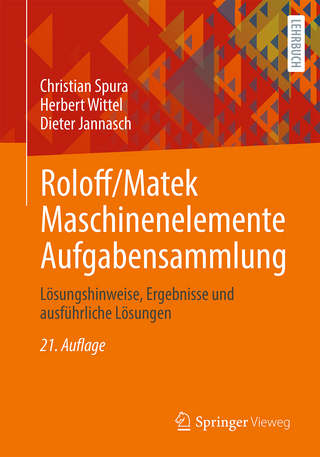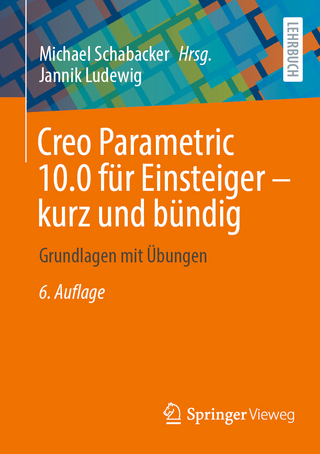
Modern Aerodynamic Methods for Direct and Inverse Applications
Wiley-Scrivener (Verlag)
978-1-119-58056-0 (ISBN)
This new book, by a prolific fluid-dynamicist and mathematician who has published more than twenty research monographs, represents not just another contribution to aerodynamics, but a book that raises serious questions about traditionally accepted approaches and formulations, providing new methods that solve longstanding problems of importance to the industry. While both conventional and newer ideas are discussed, the presentations are readable and geared to advanced undergraduates with exposure to elementary differential equations and introductory aerodynamics principles. Readers are introduced to fundamental algorithms (with Fortran source code) for basic applications, such as subsonic lifting airfoils, transonic supercritical flows utilizing mixed differencing, models for inviscid shear flow aerodynamics, and so on. These are models they can extend to include newer effects developed in the second half of the book. Many of the newer methods have appeared over the years in various journals and are now presented with deeper perspective and integration.
This book helps readers approach the literature more critically. Rather than simply understanding an approach, for instance, the powerful "type differencing" behind transonic analysis, or the rationale behind "conservative" formulations, or the use of Euler equation methods for shear flow analysis when they are unnecessary, the author guides and motivates the user to ask why and why not and what if. And often, more powerful methods can be developed using no more than simple mathematical manipulations. For example, Cauchy-Riemann conditions, which are powerful tools in subsonic airfoil theory, can be readily extended to handle compressible flows with shocks, rotational flows, and even three-dimensional wing flowfields, in a variety of applications, to produce powerful formulations that address very difficult problems. This breakthrough volume is certainly a "must have" on every engineer's bookshelf.
Wilson C. Chin, PhD, earned his M.Sc. at Caltech and Ph.D. from M.I.T. both in aerospace engineering. Early on, he had served as Senior Research Aerodynamicist at Boeing and Turbomachinery Manager at Pratt & Whitney Aircraft, authoring two dozen papers on supersonic and transonic flow, panel methods, hydrodynamic stability, computational fluid-dynamics and inverse formulations. Mr. Chin would later turn his efforts to the petroleum geosciences, writing more than twenty monographs with Wiley-Scrivener and other publishers on several areas in oil and gas exploration. He has also more than a hundred papers and four dozen patents to his credit. He is the recipient of five prestigious awards from the United States Department of Energy and is a well-regarded software developer to domestic and international petroleum companies. In the present book, Mr. Chin focuses on key aerodynamic issues he had addressed, which have grown in importance, and contributes numerous insights to modern analysis methods now key to the resurgence of new types of aircraft on the drawing boards.
Preface xii
Acknowledgements xiv
1 Basic Concepts, Challenges and Methods 1
1.1 Governing Equations - An Unconventional Synopsis 1
1.2 Fundamental “Analysis” or “Forward Modeling” Ideas 6
1.3 Basic “Inverse” or “Indirect Modeling” Ideas 15
1.4 Literature Overview and Modeling Issues 20
1.5 References 32
2 Computational Methods: Subtleties, Approaches and Algorithms 33
2.1 Coding Suggestions and Baseline Solutions 33
2.1.1 Presentation Approach 33
2.1.2 Programming Exercises 35
2.1.3 Model Extensions and Challenges 36
2.2 Finite Difference Methods for Simple Planar Flows 39
2.2.1 Finite Differences - Basic Concepts 39
2.2.2 Formulating Steady Flow Problems 45
2.2.3 Steady Flow Problems 46
2.2.4 Wells and Internal Boundaries 55
2.2.5 Point Relaxation Methods 62
2.2.6 Observations on Relaxation Methods 64
2.3 Examples - Analysis, Direct or Forward Applications 75
2.3.1 Example 1 - Thickness Solution, Centered Slit in Box 76
2.3.2 Example 2 - Half-Space Thickness Solution 91
2.3.3 Example 3 - Centered Symmetric Wedge Flow 98
2.3.4 Example 4 - General Solution with Lift, Centered Slit 101
2.3.5 Example 5 - Transonic Supercritical Airfoil with Type-Dependent Differencing Solution, Subsonic, Mixed Flow and Supersonic Calculations 119
2.3.6 Example 6 - Three-Dimensional, Thickness Only, Finite, Half-Space Solution 129
2.4 Examples - Inverse or Indirect Applications 138
2.4.1 Example 1 - Constant Pressure Specification and Symmetric Thin Ellipse 138
2.4.2 Example 2 - Inverse Problem, Pressure Specification, Centered Sit, Trailing Edge Closed vs Opened 145
2.4.3 Example 3 - Inverse Problem, Pressure Specification, Three-Dimensional Half-Space, Closed Trailing Edge, Nonlifting Symmetric Section 158
3 Advanced Physical Models and Mathematical Approaches 165
3.1 Nonlinear Formulation for Low-Frequency Transonic Flow 170
3.1.1 Introduction 170
3.1.2 Analysis 171
3.1.3 Discussion and Summary 174
3.1.4 References 175
3.2 Effect of Frequency in Unsteady Transonic Flow 176
3.2.1 Introduction 176
3.2.2 Numerical Procedure 177
3.2.3 Results 178
3.2.4 Concluding Remarks 180
3.2.5 References 181
3.3 Harmonic Analysis of Unsteady Transonic Flow 182
3.3.1 Introduction 182
3.3.2 Analytical and Numerical Approach 183
3.3.3 Calculated Results 184
3.3.4 Discussion and Closing Remarks 185
3.3.5 References 188
3.4 Supersonic Wave Drag for Nonplanar Singularity Distributions 189
3.4.1 Introduction 189
3.4.2 Analysis 191
3.4.3 Summary 193
3.4.4 References 194
3.5 Supersonic Wave Drag for Planar Singularity Distributions 195
3.5.1 Introduction 195
3.5.2 Analysis 198
3.5.3 Concluding Remarks 206
3.5.4 References 207
3.6 Pseudo-Transonic Equation with a Diffusion Term 208
3.6.1 Introduction 209
3.6.2 Analysis 209
3.6.3 Summary 212
3.6.4 References 212
3.7 Numerical Solution for Viscous Transonic Flow 213
3.7.1 Introduction 213
3.7.2 Analysis 213
3.7.3 Numerical Approach 216
3.7.4 Sample Calculation 217
3.7.5 Discussion 218
3.7.6 References 220
3.8 Type-Independent Solutions for Mixed Subsonic and Supersonic Compressible Flow 221
3.8.1 Introduction 221
3.8.2 Discussion 221
3.8.3 Numerical Approaches 223
3.8.3.1 Horizontal Line Relaxation 223
3.8.3.2 Vertical Column Relaxation 224
3.8.4 Summary 225
3.8.5 References 227
3.9 Algorithm for Inviscid Compressible Flow Using the Viscous Transonic Equation 228
3.9.1 Introduction 228
3.9.2 Analysis 229
3.9.3 Sample Calculations 231
3.9.4 Summary and Conclusions 232
3.9.5 References 233
3.10 Inviscid Parallel Flow Stability with Nonlinear Mean Profile Distortion 234
3.10.1 Introduction 235
3.10.2 Analysis 235
3.10.3 Discussion and Conclusion 239
3.10.4 References 240
3.11 Aerodynamic Stability of Inviscid Shear Flow Over Flexible Membranes 242
3.11.1 Introduction 242
3.11.2 Analysis 242
3.11.3 Specific Examples 245
3.11.4 Discussion and Concluding Remarks 247
3.11.5 References 248
3.12 Goethert’s Rule with an Improved Boundary Condition 249
3.12.1 Introduction 249
3.12.2 Analysis 250
3.12.3 Summary 253
3.12.4 References 253
3.13 Some Singular Aspects of Three-Dimensional Transonic Flow 254
3.13.1 Analysis 254
3.13.2 Discussion and Summary 257
3.13.3 References 259
4 General Analysis and Inverse Methods for Aerodynamic Modeling 260
4.1 On the Design of Thin Subsonic Airfoils 264
4.1.1 Introduction 264
4.1.2 Analysis 265
4.1.3 First-Order Problem 266
4.1.4 Second-Order Problem 269
4.1.5 Discussion and Conclusion 271
4.1.6 References 273
4.2 Airfoil Design in Subcritical and Supercritical Flows 274
4.2.1 Introduction 274
4.2.2 Streamfunction Formulation 278
4.2.3 Numerical Procedure 281
4.2.4 Calculated Results 284
4.2.5 Discussion and Closing Remarks 285
4.2.6 References 290
4.3 Direct Approach to Aerodynamic Inverse Problems 292
4.3.1 Introduction 292
4.3.2 Theory and Examples 295
4.3.2.1 Constant Density Planar Flows 295
4.3.2.2 Constant Density Flows Past Three-Dimensional Finite Wings 299
4.3.2.3 Compressible Flows Past Finite Wings 301
4.3.2.4 Flows in Fans and Cascades 302
4.3.2.5 Axisymmetric Compressible Flows 303
4.3.3 Sample Calculations 304
4.3.4 Closing Remarks 307
4.3.5 References 310
4.4 Superpotential Solution for Jet Engine External Potential and Internal Rotational Flow Interaction 312
4.4.1 Introduction 313
4.4.2 Rotational Flow Equations 314
4.4.3 The Linearized Problem 316
4.4.4 Application to Jet-Engine External Potential and Internal Rotational Flow Interaction 318
4.4.5 Calculated Results and Closing Discussion 321
4.4.6 References 325
4.5 Thin Airfoil Theory for Planar Inviscid Shear Flow 326
4.5.1 Introduction 327
4.5.2 Planar Flows with Constant Vorticity 330
4.5.2.1 Planar Flows: Inverse Problems 330
4.5.2.2 Planar Flows: Direct Formulations 331
4.5.2.3 Some Planar Analytical Solutions 332
4.5.2.4 Analogy to Ringwing Potential Flows 333
4.5.2.5 Source and Vortex Interactions for Ringwings 334
4.5.3 Airfoils in General Parallel Shear Flow 335
4.5.4 Numerical Results 339
4.5.5 Closing Remarks 341
4.5.6 References 343
4.5.7 Appendix I, Three-Dimensional Constant Density Flows 344
4.5.8 Appendix II, Planar Compressible Shear Flow of a Gas 345
4.6 Class of Shock-free Airfoils Producing the Same Surface Pressure 348
4.6.1 Introduction 348
4.6.2 Analysis 350
4.6.3 Discussion and Conclusion 351
4.6.4 References 353
4.7 Engine Power Simulation for Transonic Flow-Through Nacelles 355
4.7.1 Introduction 355
4.7.2 Analytical and Numerical Approach 356
4.7.3 Numerical Results and Closing Remarks 357
4.7.4 References 360
4.8 Inviscid Steady Flow Past Turbofan Mixer Nozzles 361
4.8.1 Introduction 361
4.8.2 Analytical Formulation 361
4.8.3 Calculated Results and Closing Remarks 363
4.8.4 References 365
5 Engine and Airframe Integration Methods 366
5.1 Big Picture Revisited 367
5.2 Engine Component Analysis 371
5.3 Engine Power Simulation Using Actuator Disks 374
5.4 Mixers and Supersonic Nozzles 375
5.5 References 377
Cumulative References 379
Index 396
About the Author 408
| Erscheinungsdatum | 19.03.2019 |
|---|---|
| Sprache | englisch |
| Maße | 10 x 10 mm |
| Gewicht | 454 g |
| Themenwelt | Technik ► Maschinenbau |
| ISBN-10 | 1-119-58056-0 / 1119580560 |
| ISBN-13 | 978-1-119-58056-0 / 9781119580560 |
| Zustand | Neuware |
| Haben Sie eine Frage zum Produkt? |
aus dem Bereich


